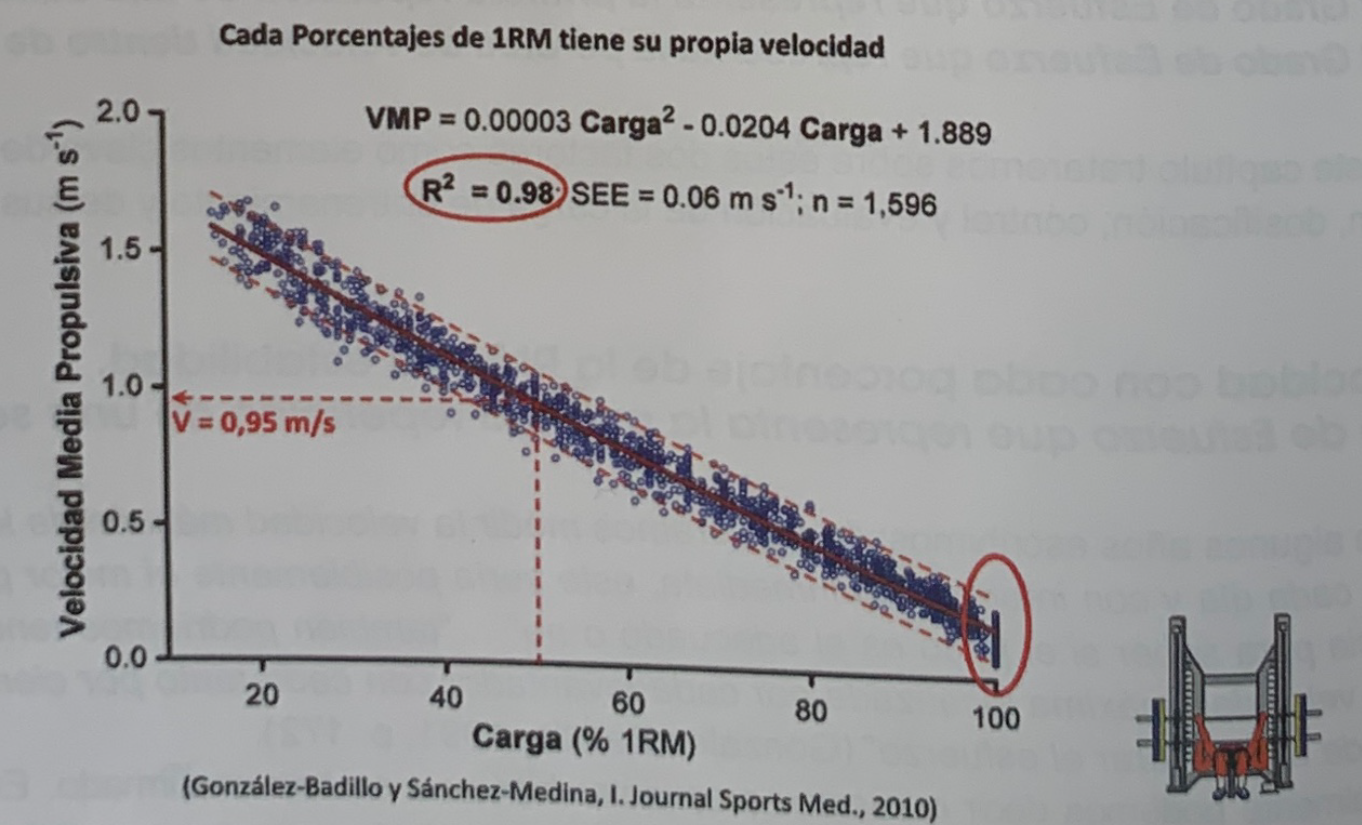Steps to follow in the process of scheduling training
In this article, a series of actions are indicated to program the training in each of the cycles that are programmed throughout the sporting life of the trained subject, always keeping in mind the previous considerations exposed in previous articles.
In this series of articles we deal with some of the most important concepts of strength training, collecting notes from the recently published book Strength, Speed and Physical and Sports Performance written by renowned researchers Juan José González Badillo and Juan Ribas Serna.
1. Select the variables that determine the load
Select the minimum speed of the first repetition in the series of the entire training cycle (relative maximum intensity of the cycle), the velocity loss in the series for the relative maximum intensity and the Effort Index (IE).
The IE is determined by the two previous indicators, and it could be the first thing to be programmed, if one had experience in the use of this index and data recorded and analyzed from previous training cycles, but since the same IE can be obtained with intensities different relative speeds and losses in the series, which would also give rise to different effects, First of all, it is necessary to choose the maximum relative intensity of the cycle (the load that moves at the slowest speed within the cycle) as a reference for the evolution of the training load throughout sporting life.

Therefore, in practice, it will be the first thing to decide. The second decision will be about the loss of speed in the series with the maximum relative intensity and the rest of the relative intensities.
The relative intensities could be expressed through real percentages of the RM, as it is more comfortable, intuitive and easier for assessment and communication between professionals and athletes. But these percentages of the RM will always be expressed and quantified through the speed with which the load must be moved, never by the calculation on a RM.
The decision on the values of the relative intensities and speed losses in the series will be made based on age, experience in strength training, the strength needs of the sport and the initial situation of the subject.
2. Select the minimum intensity of the cycle and the loss of speed in the series with this load.
The next step to program training is to select the minimum intensity of the cycle (highest speed of the first repetition within the cycle), that is, the speed with which the first training sessions of the cycle are carried out, with the lightest loads, and the speed loss in the series for this relative intensity.
The speed losses with the lighter intensities will always be lower than with the higher intensities within the cycle. It must be taken into account that the same speed loss under a light load means greater IE (greater fatigue) than under higher loads. Therefore, the use of the same speed loss in the series before all the intensity would mean performing a higher IE with light loads. The basic orientation is that the loss of speed with light loads is lower.
With small loads, by reducing the loss of speed in the series, the repetitions performed will be proportionally further away from the possible repetitions in the series and the IE will be less than or equal to that achieved with high loads.
3. Determine the duration of the cycle.
This is a necessary step, but it is not conditioned by the fact that speed is used as a reference for training organization. The duration of the cycle, as a general rule, should not be more than 8-12 weeks. In addition, you can do cycles of 4-6 weeks that can also be very effective in certain situations. The duration of the cycle will tend to be longer at the beginning of the season and in the early stages of sporting life.
When the number of competitions in the season is not very frequent, for example, only in 2-4 short periods of time per year, the length of the cycles, apart from the adaptation times, is highly conditioned by the dates of the competitions. .
If the competitions are very frequent, what determines the duration or length of the cycles will be the adaptation times.
4. Determine training frequency
This is also a necessary step, but it is not conditioned by the fact of using speed as a reference for programming training. Two strength training sessions a week are compatible in most cases with the specific training of many sports specialties. But the most important thing is to choose well the frequency with which each exercise is trained, which preferably should not be more than twice a week. Weightlifting is naturally excepted from this general suggestion.
However, it must be taken into account that increased frequency does not necessarily mean increased load. If the same job is divided into two sessions, the frequency will increase, but the load will be the same or, with high probability, less, since the fatigue values per session would be lower.
5. Distribution of the maximum intensities of each session, between the minimum and the maximum of the cycle
Depending on the values of the minimum and maximum intensities chosen, it is decided how many intermediate maximum intensities will be used. For example, if the minimum intensity is equivalent to an intensity of 50% of 1RM and the maximum to 70%, 1RM (loads that, naturally, would be determined by speed), training could be programmed with intermediate intensities equivalent to 55, 60 and 65 % of 1RM.
Therefore, there would be five maximum intensities in total for all sessions. Once the training frequency of the exercise and the set of maximum intensities of each session are known, training can be programmed by distributing these intensities among the frequencies.
For example, if for the indicated intensities there were 20 sessions, which could correspond to 10 weeks of training, with two sessions per week the simplest distribution would be to train four times with each maximum intensity. Naturally, the distributions could be different depending on the cases.

This is not the time to develop all the possible alternatives, but as a guideline, it must be taken into account that given the same intensities and weekly training frequency, training can be programmed with different resulting global loads. This overall load will depend on the greater or lesser frequency with which the maximum expected intensities are used.
If instead of performing each maximum intensity four times, as indicated, 50% is performed 5 times, 55% 6 times, and the remaining three intensities are performed 3 times each, the average intensity of the cycle will decrease. If, on the contrary, a redistribution is made by increasing the frequency of the two higher intensities, the average intensity will rise. These changes in the frequency distribution of the maximum relative intensities is a way of modifying the load and progressing in the training demand without modifying the range of intensities used during the cycle.
6. Decide the number of series before each training intensity, especially before the maximum intensities of each session
The most frequent number of series to perform with each of these intensities will be between 2 and 4. And within this range, the most common is to do 3 series with the maximum intensity of the day. With the warm-up intensities, it is usual to use one series for each intensity, progressing until reaching the maximum intensity established (main load of the session). As already indicated, the repetitions to be performed in each series with the maximum intensities of the session are not programmed, as they will be determined by the selected loss of speed.
schedule training


















